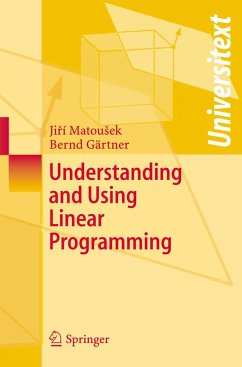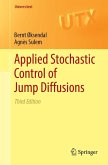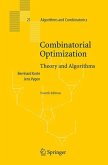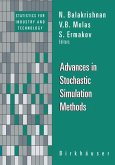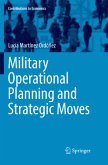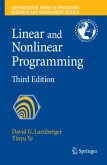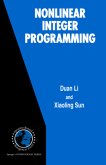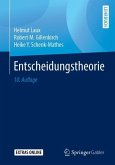This is an introductory textbook of linear programming, written mainly for students of computer science and mathematics. Our guiding phrase is, "what every theoretical computer scientist should know about linear programming". The book is relatively concise, in order to allow the reader to focus on the basic ideas. For a number of topics commonly appearing in thicker books on the subject, we were seriously tempted to add them to the main text, but we decided to present them only very brie?y in a separate glossary. At the same time, we aim at covering the main results with complete proofs and in su?cient detail, in a way ready for presentation in class. One of the main focuses is applications of linear programming, both in practice and in theory. Linear programming has become an extremely ?- ible tool in theoretical computer science and in mathematics. While many of the ?nest modern applications are much too complicated to be included in an introductory text, we hope to communicatesome of the ?avor (and excitement) of such applications on simpler examples.
From the reviews:
"The authors' guiding phrase is 'what every theoretical computer scientist should know about linear programming'. ... this book is easy and pleasant reading. A number of examples and illustrations are provided throughout the book. ... The book is well written and well organized; I recommend it to undergraduate students and also to 'pure mathematicians' ... . I recommend this book to computer scientists and mathematicians willing to learn the fundamentals of linear programming, and some of its many applications." (Fabio Mainardi, MAA Online, February, 2007)
"If you are looking for a concise and well-written overview of linear programming, then this may be the book for you. ... The book is appropriate for nontheoretical computer scientists as well ... . Matousek and Gärtner's Understanding and Using Linear Programming is a well-written introduction to the subject. ... an excellent choice for anyone with a working knowledge of linear algebra who wants to learn more about the history and theory of linear programming, as it is written clearly and has a lively spirit." (Nancy C. Weida, SIAM Review, Vol. 49 (4), 2007)
"Focus in this interesting and recommendable textbook is on geometry and duality as well as on different solution algorithms for linear programming problems. The structure of the feasible set is explained and the relations between its vertices and basic feasible solutions are shown. ... Both the ellipsoid and the interior point methods can be found in the textbook. The theory is complemented by many examples both from applications and relaxations of integer linear programming problems." (Stephan Dempe, Zentralblatt MATH, Vol. 1133 (11), 2008)
"The authors' guiding phrase is 'what every theoretical computer scientist should know about linear programming'. ... this book is easy and pleasant reading. A number of examples and illustrations are provided throughout the book. ... The book is well written and well organized; I recommend it to undergraduate students and also to 'pure mathematicians' ... . I recommend this book to computer scientists and mathematicians willing to learn the fundamentals of linear programming, and some of its many applications." (Fabio Mainardi, MAA Online, February, 2007)
"If you are looking for a concise and well-written overview of linear programming, then this may be the book for you. ... The book is appropriate for nontheoretical computer scientists as well ... . Matousek and Gärtner's Understanding and Using Linear Programming is a well-written introduction to the subject. ... an excellent choice for anyone with a working knowledge of linear algebra who wants to learn more about the history and theory of linear programming, as it is written clearly and has a lively spirit." (Nancy C. Weida, SIAM Review, Vol. 49 (4), 2007)
"Focus in this interesting and recommendable textbook is on geometry and duality as well as on different solution algorithms for linear programming problems. The structure of the feasible set is explained and the relations between its vertices and basic feasible solutions are shown. ... Both the ellipsoid and the interior point methods can be found in the textbook. The theory is complemented by many examples both from applications and relaxations of integer linear programming problems." (Stephan Dempe, Zentralblatt MATH, Vol. 1133 (11), 2008)

